
Don Curry on Tour
vakantio.de/doncurryontour
Don Curry and the Feeding of the 20,000
Ebimisami: 21.01.2017
Abonnez-vous na Bulletin ya Sango
Don Curry is very interested in religions. His own Christian faith is naturally very important to him, but he is also open to experiences with other faiths. Even though today fundamentalism and religious fanaticism too often unleash their destructive power in the world, Don Curry generally believes that a religious person is a better person; one who goes beyond themselves.
An early breakfast was followed by an early departure from Agra. The group had to return to Delhi in order to fly to South India the next day. The journey went quickly on a well-built highway, although a tour bus of course can't compete with the driving finesse and skill of a Mr. Sanjay. However, Don Curry soon learned about a very special tradition on the bus. A miracle medicine was administered twice a day at different times to supposedly prevent digestive problems with Indian cuisine, and it consisted of 100% Indian "Old Monk" rum, although some fellow travelers dissolved it in cola; Don Curry, of course, swore by the unadulterated purity of the application. Each administration of the medicine required about 1 liter of Old Monk rum; the group met the beneficial effects of this medicine with so much confidence that even on long journeys, the mood suddenly became significantly more positive. This also made it easier to endure another tradition of the bus travelers: there was never a lunch break at a restaurant along the way. Instead, the co-driver generously distributed bananas, tapioca chips, rice flour rings, and other snacks during the journey. Otherwise, the daily program would almost never have been completed.
The first stop in Delhi was the so-called Lotus Temple. It had been built by the Bahai religion as their headquarters in India and was intended to be used as a meditation room for people of all religions. However, the architecture of the temple, designed like an opening lotus flower, and its magical illumination in the evening radiated so much beauty that no one came to meditate, but hundreds of busloads of tourists came daily to admire the building.
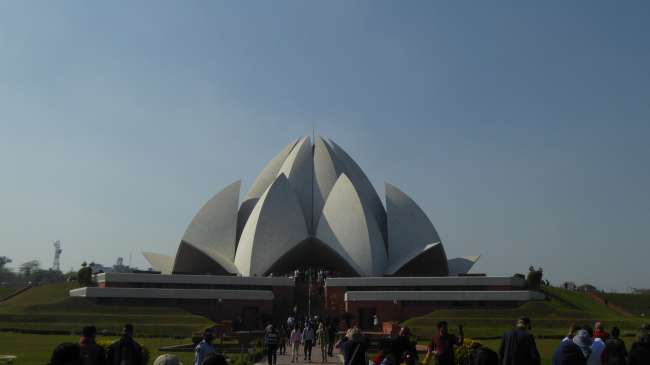
The visit of the temple was organized in a very regimented manner. The tourists gradually approached the temple along long paths. The first station was the shoe deposit, where the various shoes of the group were collected in several bags. Then, on a winding bridge, they walked up to the main entrance, with about 50 to 60 visitors having to line up in a semicircle and receive a brief overview of the history of the Bahai Shrine and rules of conduct for the visit. After this speech, the gates opened, and they were allowed to enter a huge, unadorned room, whose only furnishings consisted of numerous rows of chairs and a kind of lectern at the apex. Despite or perhaps because of its simplicity, the room actually invited meditation and almost compelled stillness, so the part of the speech on meditation was not necessarily necessary. However, as soon as they had taken their seats and just begun to absorb the atmosphere of the room, the doors opened again and there was a clear invitation to leave. Outside, the next group was already awaiting their speech. The path now led back to the shoe bags and then to the exit of the premises. Overall, this visit to the Bahai temple took perhaps 30 minutes, but Don Curry didn't take anything away from it except for a moment of silence.
The next religion on the program was Islam. However, with buildings from Delhi's medieval period that no longer have a religious function but are part of the world cultural heritage. The Qutub Minar complex houses India's tallest minaret, the failed attempt to build an even higher one, remains of a magnificent mosque, and the mausoleums of some rulers from the time of the Delhi Sultanate. All of this is located close together in a well-maintained area. After a general introduction, Guide Gauror gave 30 minutes for personal exploration - Don Curry immediately began to suffer from this time limit, but bravely set about trying to see and photograph as much as possible. At this point, almost nothing could be learned about living Islam, but Don Curry admired the artistic and architectural achievements that this religion had already inspired in its early days. When fanatics nowadays supposedly destroy irreplaceable works of art in the name of Islam in a barbaric manner, they are moving further away from their religion than anything they destroy. However, these dark thoughts only briefly crossed Don Curry's mind, while the lasting impressions were the delicate elegance of the minaret, the varied craftsmanship of the mosque's columns, and the impressive splendor of the mausoleums. Beauty is at home in every true religion, Don Curry took this as his realization.
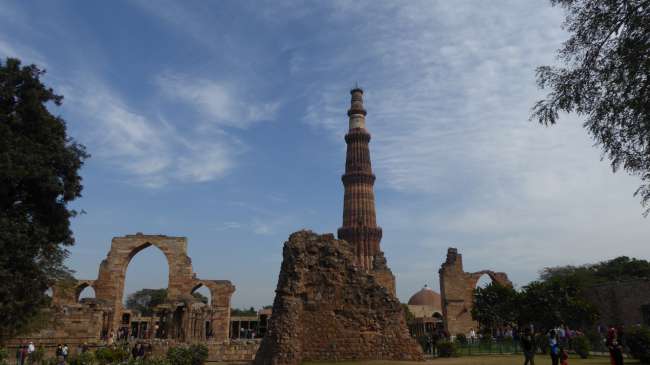
After the group was collected, the bus drove past the British showpiece buildings from the colonial era, where Indian politics is now made. However, the actual destination was supposed to be Delhi's largest Sikh temple. As a relatively young religious community, Sikhs are considered very tolerant towards believers of other faiths. Everyone is allowed to visit their temples, but they must fulfill two conditions: they must not wear shoes and must cover their heads with a cloth - hats, caps, or hoods do not count. Orange headscarves were conveniently available, so soon a gang of barefoot pirates trod onto the Sikh grounds. The gleaming white buildings with their golden domes against the blue Delhi sky radiated a special dignity. In the temple, an old Sikh sat reciting texts from the Sikh holy book, with an extremely long white beard and a magnificent turban, surrounded by other officials.
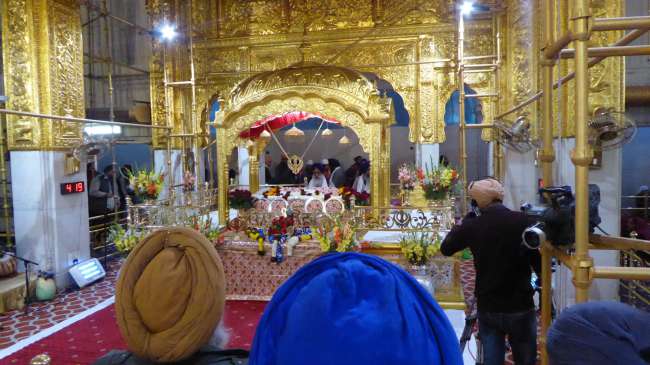
Many believers listened attentively, while others walked in a procession behind the reciter and made offerings, which were stored in a large box. This money serves a special purpose, as the group would soon learn. But first, they admired the extensive temple lake with its white-columned arcades. The Sikhs do not limit themselves to praying and reflecting on their holy scriptures; they actively practice charity. In their temples, anyone who wants can be provided with free meals twice a day. Cooking is done in huge pots in a massive kitchen, bread is baked literally non-stop, vegetables are chopped, and fruit is prepared - all of these activities are carried out by volunteers, who do this service regularly or only once.
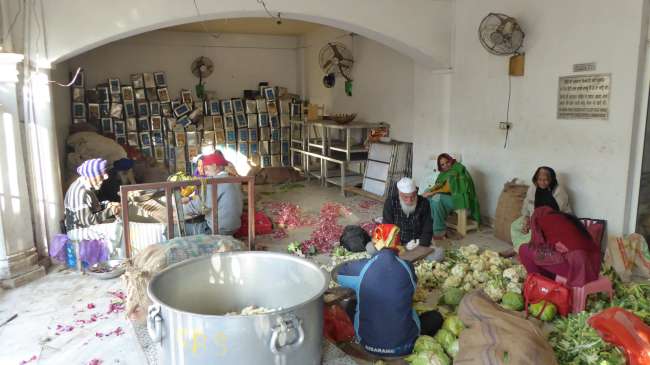
In the immense dining hall, the hungry sit in long rows on the floor and enjoy their warm meal, and there is always a need for this in Delhi, especially among the many poor and poorest. Around 20,000 meals are prepared and given away in the Sikh temple every day. The group and Don Curry were deeply impressed by how this religious community improves the lives of so many other people day after day in a very concrete way. Because this is also what religion is: it must not be purely self-serving; by its very nature, it must make our world demonstrably better.
After so many impressions, Don Curry was only looking forward to the dinner buffet and bed. Whether he dreamed of a better world that night, he no longer remembers...
Abonnez-vous na Bulletin ya Sango
Eyano
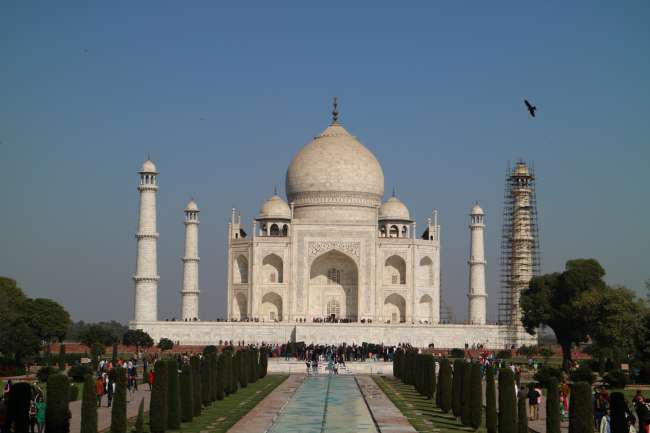
Lapolo ya mobembo Inde
